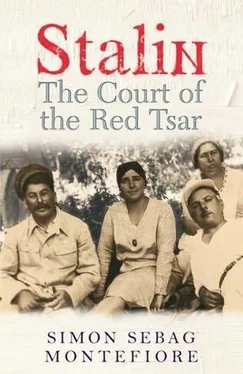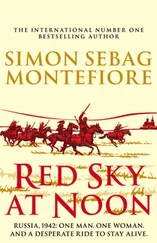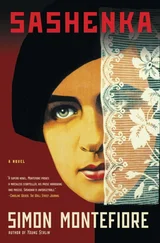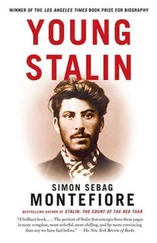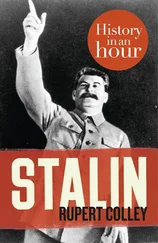Stalin walked up to him and stared into his eyes. “I can honestly say,” recalled Shepilov, “I never saw such a look… His eyes seemed to possess some incredible force. Their yellow pupils transfixed me like… a cobra coiled to strike.” Stalin “did not blink for what seemed eternity.” Then he demanded: “Why did you do it?”
Shepilov tried to explain but Stalin interrupted: “We’ll set up a committee to clarify all the facts. The guilty must be punished. Not Yury Zhdanov, he’s still young,” but he pointed his pipe at “the Pianist”: “It’s necessary to punish the fathers.” Then, in a terrible silence, slowly pacing, he listed the members of the committee—Malenkov… but no Zhdanovs! Stalin deliberately waited until the end. Did this mean the Zhdanovshchina was over? “After long thought, Stalin uttered, ‘And Zhdanov,’ leaving a long silence before adding, ‘Senior.’”
Yury wrote an apology to Stalin, citing his own “inexperience”: “I unquestionably committed a whole series of grave mistakes.” Malenkov masterfully manipulated the unintentional impudence of Zhdanov junior to pull himself back into the centre: the apology was published in Pravda . But Stalin himself had engineered Zhdanov’s eclipse. The humiliation worsened Zhdanov’s health: he must have wished he had emulated the Berias and Malenkovs who kept their children far from politics. 3
On 19 June, an exhausted Zhdanov, accompanied by his rival Malenkov, arrived at the second Cominform meeting in Bucharest to preside over the expulsion of Yugoslavia from the fold. “We possess information,” Zhdanov declared absurdly, “that Tito is an Imperialist spy.” The Yugoslavs were excommunicated.
On 24 June, Stalin imposed the Berlin Blockade, challenging the Western Allies and hoping to force them out by closing land supplies to their zone deep in Soviet East Germany. Both these challenges could only accelerate the vicious campaign against Jews in Moscow and the venomous fight for Stalin’s succession. It is usually claimed that Zhdanov had supported the Yugoslavs and therefore was blamed for the rift. Zhdanov and Voznesensky had indeed known the Yugoslavs well since 1945 but they not only supported Stalin’s stance but accelerated it by bringing Tito’s antics to his notice.
The Yugoslav schism was the unnecessary result of Stalin’s own obstinacy. While the country worshipped Stalin the God, familiarity bred contempt. By 1948, Djilas believed Stalin was “showing conspicuous signs of senility,” comparing everything to distant memories of his childhood or Siberian exiles: “Yes I remember the same things…” then “laughing at inanities and shallow jokes.” His own men observed his intellectual decline and dangerous unpredictability: “old and addled, we started to lose respect for him,” said Khrushchev. Beria too had gone through the same “evolution”—starting with zealous worship and ending with disillusion. But most of the magnates, particularly Molotov, Mikoyan, Kaganovich and Khrushchev, remained fanatical believers in Marxism-Leninism, while virtually all of them, including Malenkov who saw himself as a civil servant chinovnik, believed Stalin was still on the side of history, for all his faults. 4
In June, Zhdanov, back from Bucharest, suffered another cardiac crisis and a minor stroke, resulting in breathing difficulties and paralysis of the right side. “I’ve been told to have medical care and rest,” he told a protégé. “I don’t think I’ll be away for long.” On 1 July, Stalin replaced Zhdanov with his nemesis, Malenkov, as Second Secretary. He was a useful scapegoat but, in Stalin’s orbit, there was no need to destroy Zhdanov to promote Malenkov: it suited Stalin to run them in parallel. Zhdanov fainted on his way back from Kuntsevo: now, desperately ill, he could no longer perform his duties. Yury explains that his father “wasn’t dismissed—he simply fell ill and couldn’t defend his interests,” which is confirmed by the doctors: “Comrade Zhdanov needs two months rest, one in bed,” Professor Yegorov told Stalin in a Top Secret report on which Stalin wrote: “Where vacation? Where treatment?”
Stalin, recalls Yury, “became worried. Father’s illness caused a change in the balance of power.” Mikoyan confirmed this. Indeed Zhdanov’s allies, Voznesensky and Kuznetsov, remained ascendant. Yury kept his job.
Stalin sent his own doctors to supervise Zhdanov who was moved to a sanatorium at Valdai, near Novgorod. Nonetheless, Zhdanov felt power slipping through his sclerotic fingers: when, on 23 July, Shepilov called to update him on Malenkov’s return, Zhdanov shouted into the phone. That night, he had a heart attack. Stalin sent his deputy Voznesensky and his own physician Vinogradov to visit the patient.
Zhdanov’s obvious symptoms of arteriosclerosis and heart failure were misdiagnosed. Instead of daily cardiograms and total rest, he was prescribed exercise and harmful massages. On 29 August, he had another severe attack. Once again Stalin sent Vinogradov and ordered Voznesensky and Kuznetsov to check the treatment. Before the politicians arrived, a row broke out over the patient. Dr. Lydia Timashuk, the cardiographer, diagnosed a “myocardial infarction” (a heart attack), and she was almost certainly right, but the distinguished professors made her rewrite her report to specify a much vaguer “dysfunction due to arteriosclerosis and hypertension” in a typical piece of bureaucratic infighting. The doctors poohpoohed her grave diagnosis and prescribed walking in the park. Hence, Zhdanov suffered another heart attack.
Timashuk denounced her superiors and had Zhdanov’s chief bodyguard deliver the letter to General Vlasik to give personally to Stalin. When nothing happened, Timashuk, an MGB agent, wrote to the secret police. Abakumov forwarded the letter to Stalin that same day. Stalin signed it, wrote “Into the archive,” but did nothing. But he was “very anxious and sent back Voznesensky to check on Father,” says Yury who was already there.
On the 31st, Stalin’s fallen favourite got out of bed to visit the lavatory and died of a massive coronary. On Poskrebyshev’s orders, the post-mortem was carried out in an ill-lit, shoddy bathroom in Kuznetsov’s presence. The professors were terrified that their misdiagnosis and cover-up would be exposed so they sacked and denounced Timashuk who then wrote more damning letters to Stalin and Kuznetsov, MGB curator . But this time, Vlasik did not deliver the letter and Kuznetsov ignored his.
Timashuk became the villainess of the Doctors’ Plot because her letters were later used by Stalin but this was ironic since she was medically correct. Zhdanov may have been mistreated but the rumours of murder seem unlikely. The Kremlevka was meant to be the finest Soviet hospital but was so ruled by fear of mistakes, scientific backwardness and political competition that incompetent decisions were made by committees of frightened doctors. Famous patients, from Mekhlis to Koniev, were routinely mistreated. Even in democracies, doctors try to cover up their mistakes. If Stalin had really wanted to murder Zhdanov, it would not have taken five heart attacks over years but a quick injection. Zhdanov’s widow and son were convinced he was not killed: “Everything was simpler,” Yury recalls. “We knew his doctors well. Father was very ill. His heart was worn out.”
Yet why did the manically paranoid Stalin ignore the denunciation? Zhdanov’s illness was obviously serious and Stalin may well have been content to leave treatment to the top Kremlin doctors: besides he was irritated with Zhdanov. But at a deeper level, these medical squabbles were an opportunity for Stalin. He had used medical murder himself and forced doctors in the thirties to confess to killing Kuibyshev and Gorky. This meticulous opportunist and patient conspirator, older but still a genius for creating complex machinations, would exploit Zhdanov’s death when he was ready to create the Terror he was convinced was necessary. A year later, his old comrade Dmitrov, the Bulgarian Premier, died while being treated by the same doctor. Walking in the Sochi garden with his Health Minister, Stalin stopped admiring his roses and mused, “Isn’t it strange? One doctor treated them and they both died.” He was already considering the Doctor’s Plot but it would take him three years to return to Timashuk’s letters.
Читать дальше
